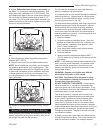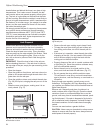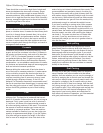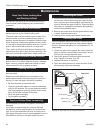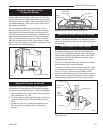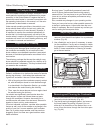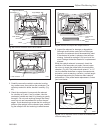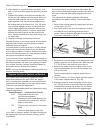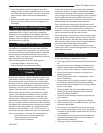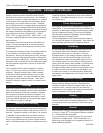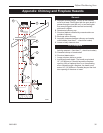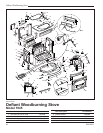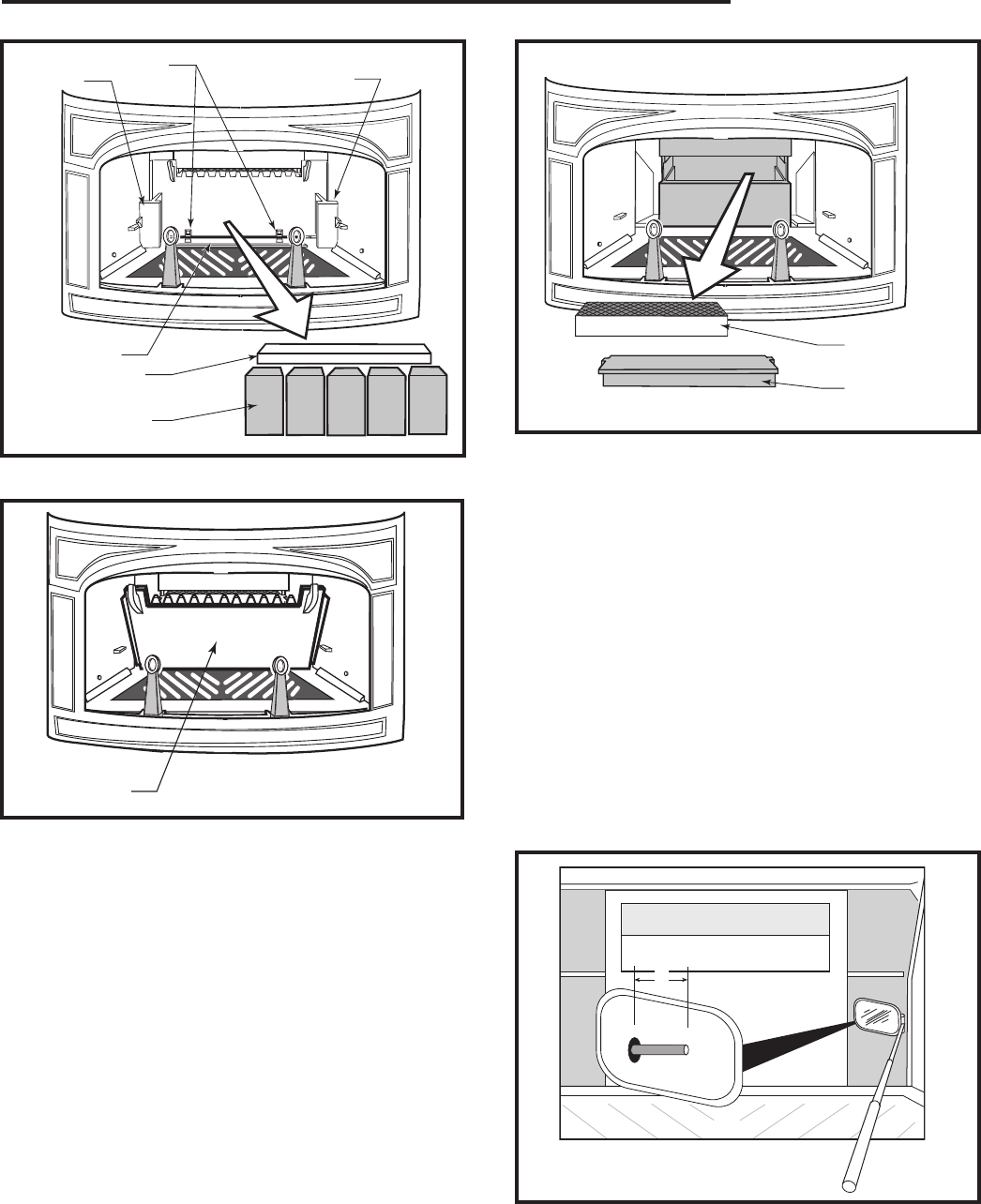
31
Defiant Woodburning Stove
30001693
St556
inspect
catalytic element
2
11/00
Alignment Notches
Left Wedge
Brick Guide
Brick Clip
Bricks
ST556
Fig. 43 Remove the bricks and the brick retainer.
Right Wedge
St557
inspect
catalytic ele
3
11/00
Lower Fireback
ST557
Fig. 44 Remove the lower fireback.
3. Carefully remove the catalytic combustor’s refrac-
tory access cover, then remove the combustor. The
refractory material is brittle; handle it carefully. (Fig.
45)
4. Check the combustor’s honeycomb-like element
for a buildup of fly ash. If any is evident, take the
combustor outside and clean it by blowing air gently
through it. Do not push anything through the honey-
comb; do not use compressed air to clear the pas-
sages. Such abrasion can scrape the thin coating of
platinum (the catalyst) off the ceramic base, shorten-
ing the catalyst’s life and reducing its effectiveness.
ST558
Inspect
Catalytic element
4
11/00
Catalytic Ele-
ment
Catalytic Access
Panel
ST558
Fig. 45 Remove and inspect the catalytic element.
5. Inspect the element for damage or degradation.
Although small hairline cracks will not affect per-
formance, the element should be essentially intact.
If the element is broken in pieces or has sections
missing, it should be replaced. Call your local Ver-
mont Castings Authorized Dealer for a replacement
element.
While the catalytic element is removed, check the
condition of the secondary air probe. Use an inspec-
tion mirror to locate the probe within the combustion
chamber. (Fig. 46) The probe should extend 1” to 1¹⁄₂”
into the chamber and show no signs of excessive de-
terioration, such as warping, corrosion, or short length.
A damaged secondary air probe can affect catalytic
performance. If the probe needs replacement, contact
your local dealer.
1"
ST559
Secondary
Probe inspection
11/00
ST559
Fig. 46 Use an inspection mirror to check the reflected view
of the secondary probe.



